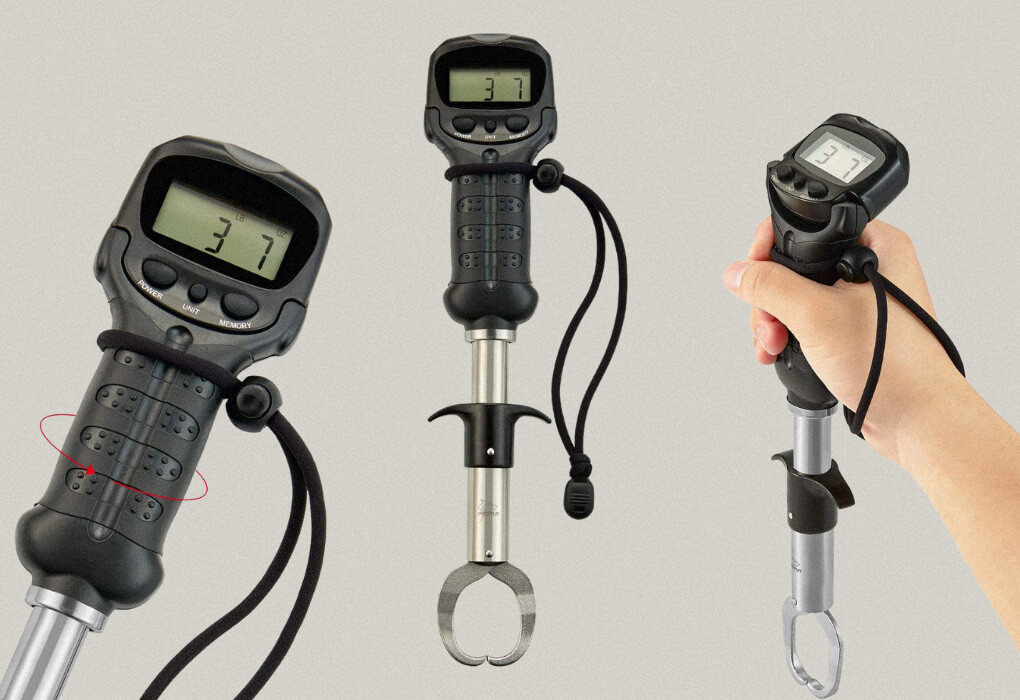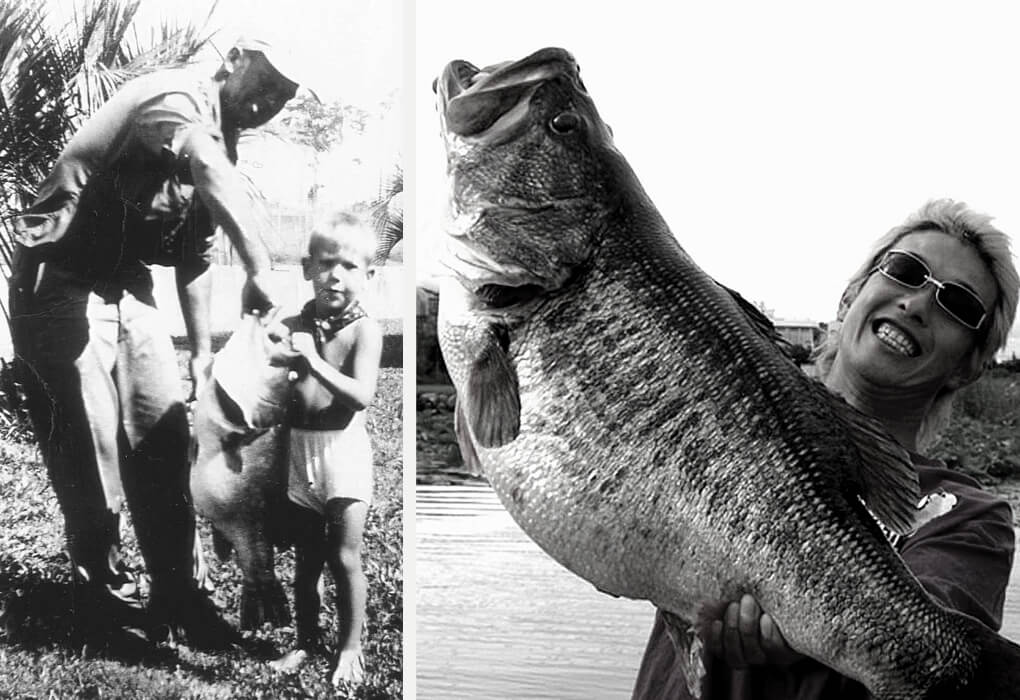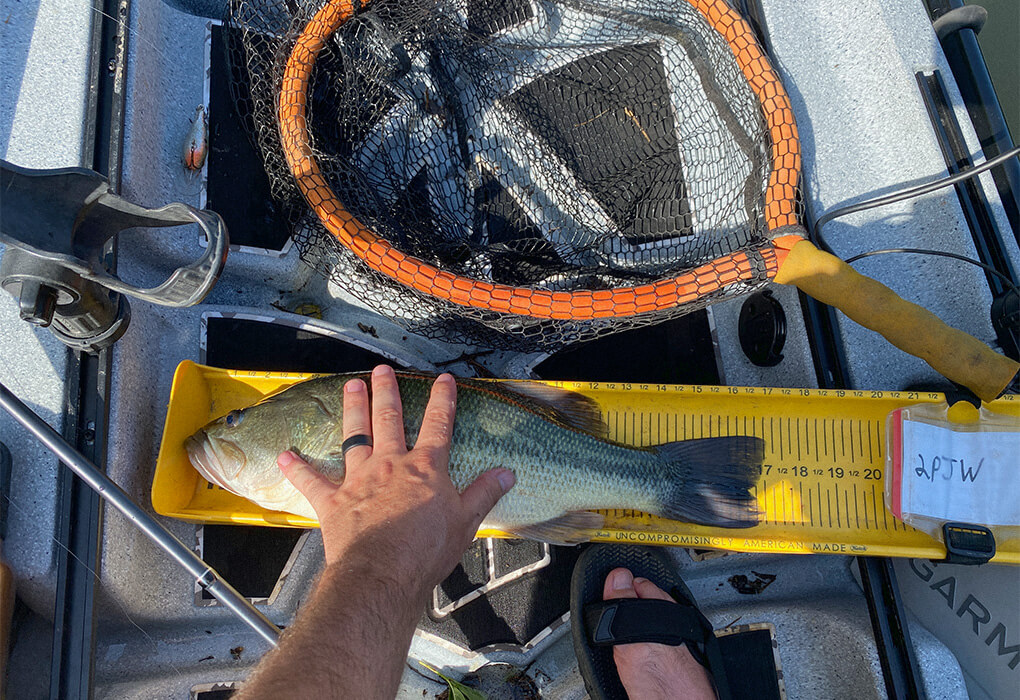Slabs, bucket mouths, or bigmouths, no matter what anglers call them, largemouth bass (black bass) are one of the most popular freshwater game fish for a reason.
However, the size of largemouth bass is as significant as the fight they put up once hooked.
Even a two-pound largemouth bass puts up a good fight; in some areas, big largemouths grow to weigh 20+ pounds.
How big do largemouth bass get? Here are a few answers for you.
Anglers.com Community Coordinator Wes Littlefield gives us the details on what makes a BIG bass in this YouTube video.
What Is the Maximum Size of a Largemouth Bass?
That depends on what you mean by “size.” Largemouth bass sizes can mean length, which can be both impressive and meaningless, and weight, which is almost always impressive but can be misleading.
Length

To find the length of a big bass, measure it from the tip of its lower, protruding jaw back to the lengthiest section of its “tail” or caudal fin. Measure to the nearest eighth of an inch.
There are two ways you can measure largemouth bass size. Both require lying the bass flat on the ground, table, or countertop.
Measure when the bass is alive before it stiffens. One is to use a sewer tape measure. The other is to use a fixed ruler or bump board.
With all types of bass and regardless of how you measure its length, if you are trying to get more precise than a quarter inch, keep in mind that the bend of the tail and fish’s belly can alter the actual reading.
Weight

(Photo credit: Major League Fishing)
The weight of your freshwater fish is also an indicator of size. The older the bass, the more it will weigh.
If fishing in a new area, it is essential to remember that average bass sizes vary significantly from region to region.
Refrain from assuming a bass caught in the northern part of the USA has the same weight-age ratio as a bass caught in the southern region.
There are a few options for weighing your trophy bass.
Sling and Hook Scale
A hook scale is exactly what it sounds like: A scale with a hook to attach a weight. The scale can be digital or analog (the scale with a dial as opposed to a digital display.)
Put your adult largemouth bass inside the sling and attach the sling to the hook on the scale.
You can hold or attach the scale to a point above the fish.
There are two essential criteria for measuring weight this way:
- The sling must be still and not swinging
- The stabilizing point (where the scale gets held in place) must be dependable
If either is not the case, the scale will not give an entirely accurate measurement, although it will give you an approximate weight for your fish.
Lip Gripper Scale

This scale works on the same principle as the sling and hook scale. It is portable, usually tubular, and lightweight. It can also have a digital or an analog readout.
To weigh a fish, you grip the lip of the fish and lift it. The weight of the fish will pull the gauge to the appropriate weight or if the scale is digital, provide a digital readout.
A lip gripper scale is one of the better options if your fishing platform is less than stable, like a Jon boat, canoe, or stand-up kayak.
Bench Scales
A bench scale is the type of scale that is used in the post office to weigh mail or packages.
These present a platform to put the fish on horizontally. They are usually digital; this is how most bass fishing tournaments weigh fish.
Maximum Sizes For Bass

A Bass’s maximum size depends on the body of water it lives in (water temperature) and its available food sources.
In ideal conditions, a bass can grow more than 25 inches long and weigh a little over 20 pounds. Bass that reach those proportions are usually near the end of a typical bass lifecycle.
To answer the question of “how big do largemouth bass get,” here are a few state records:
- Alaska: .5 lbs
- Alabama: 16 lbs., 8 oz.
- California: 21 lbs., 12 oz.
- Illinois: 13 lbs., 1 oz.
- Minnesota: 8 lbs., 12.75 oz.
- New Hampshire: 10 lbs., 8 oz.
- South Carolina: 16 lbs., 2 oz.
As you can see, the state records are all over the map regarding how big a bass can get.
In places like Alaska, where largemouth bass are not usually found, the maximum size would be much smaller than in California, Alabama, or South Carolina; three states are known for extraordinary largemouth bass fishing.
What Is the Average Size of a Largemouth Bass?

As mentioned, the size of any bass (largemouth bass, smallmouth bass, striped bass, spotted bass, etc.) depends on where it lives, which heavily influences its growth rate.
Bass in warmer and protected environments tend to live longer and have more food sources (shad, minnows, crappies, bluegill, sunfish, yellow perch, and other baitfish) than those that live in colder climates or bodies of water with little protection and scarcer food.
Other variables that affect bass size include:
- Bass population numbers
- What predators live there
- Water quality
- Natural competition for food from other fish (catfish, northern pike, walleye, white bass, etc.)
- Fishing pressure, even catch and release, from anglers, particularly during spawning, tournaments, and fall feeding times in preparation for winter.
A bass that lives in Texas, Florida, or Alabama in fisheries with lots of baitfish, crayfish, and other food sources will tend to be larger than a bass that lives in cold water reservoirs with limited bait.
On average, across the country, bass usually comes in around 1 to 5 pounds and maxes out around 20 inches. Male bass tend to weigh 5 pounds or less, so most bass that exceed that weight are female.
State Averages
There really is no way to gauge the average weight of a bass per state. There is no accurate method because of the diversity of bass habitats.
One lake might have 3-pounders mostly, while a pond adjacent to the lake has 5-pounders, and a river the lake drains into might have 2-pounders that are super lean and strong.
One way to estimate the likely average bass size is to look at the state records. Your average-sized fish will be several pounds less than a state record.
However, most bass will fall into that 1 to 5-pound category, no matter what state you fish for them in.
Biggest Largemouth Ever Caught

The largest largemouth bass ever caught is a tie between two bass. The first was caught by George Perry in June of 1932 in Montgomery Lake, Georgia, and weighed 22 pounds, 4 ounces.
The other fish was Manabu Kurita in 2009, who caught a largemouth bass weighing 22 pounds, 5 ounces in Lake Biwa, Japan.
The reason Kurita’s fish is not the record holder is that according to the International Game Fish Association, the organization that maintains the records, any fish smaller than 25 pounds must be at least 2 ounces more than the existing record holder to break that record.
That is a fair way to manage world records because bass weights can be influenced by many factors when considering the weight down to ounces.
A bass that just had a meal of a frog or other fish may weigh just the meal’s weight more than a bass that has not eaten.
Additionally, scales might be calibrated in different ways, which could also skew results.
How Long Do Largemouth Bass Live?
The lifespan of a largemouth bass is also heavily influenced by where it lives.
A fish in a safe location where the climate is optimal and food abundant will live much longer than a fish that has to fight for its food in a dangerous area with cold weather.
The oldest known bass lifespan was 23 years. The average fish will live between 10 and 16 years.
Largemouth Bass Weight by Length

You can estimate a largemouth bass’s weight by its length. Typically, the longer the largemouth bass, the more they will weigh.
This rule holds in all but a few exceptions, such as when food is so abundant that the fish’s girth expands more rapidly than its length or when food is limited, and the sport fish is long and skinny.
Charts are available online to see the average bass size based on length.
Last Cast
As far as freshwater gamefish go, largemouth bass are popular because they get big and put up a good fight when hooked.
By assessing the size of largemouth bass, you can guess its approximate weight.
Just remember that everyone thinks fishermen exaggerate the size of their catches, so photos with something to scale them on is advisable.
Although if you don’t come home with a good fish story, did you really go fishing?
What’s your PB? Let us know in the comments!
Bonus tip for reading to the end, jigs are one of the best lures to catch lunkers in deep or shallow water.




